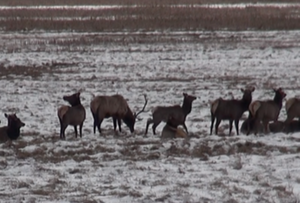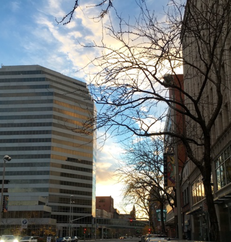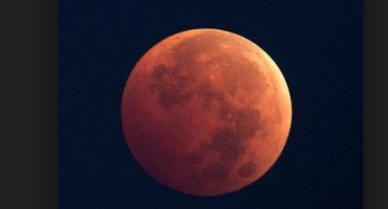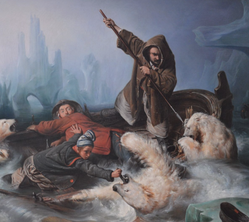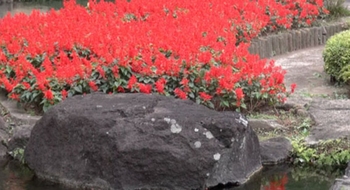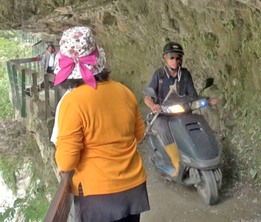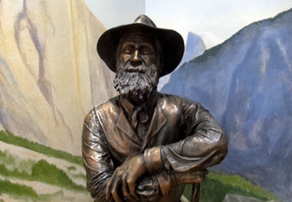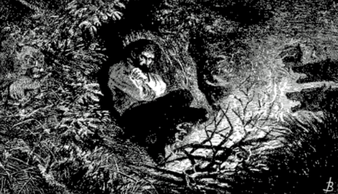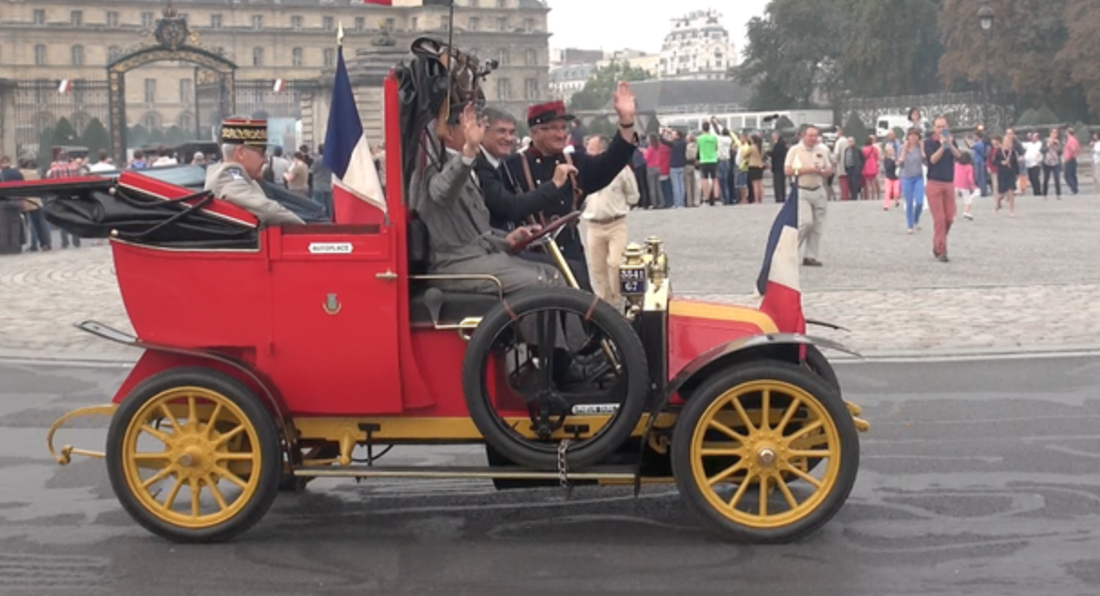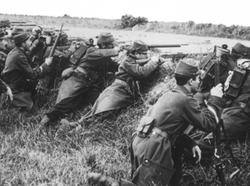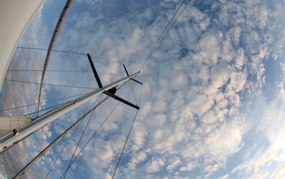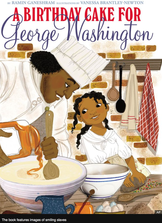
After enduring a storm of criticism over its new children's book, A Birthday Cake for George Washington, Scholastic Publishing announced this week that it would halt distribution of the book. It tells the story of George Washington's cook, Hercules, and his daughter, Delia, facing the challenge of baking the President a birthday cake without sugar. I would like to describe the book more fully, but Amazon and other distributors no longer sell it, and "scalpers" are asking as much as $1,500 for a copy. Apparently though, Delia and her Dad are pictured smiling throughout the book, and Hercules is said to be proud of his work as chef to President Washington. And therein lies the problem.
|
The National Elk Refuge outside of Jackson, Wyoming, boasts one of the largest elk herds in the world—about 7,500 animals. The refuge was established in 1912 to protect the herd, which had thrived in Jackson Hole before the arrival of cattle and the depletion of grasses needed by the elk. The refuge has set aside an area of about 25,000 acres, which has helped the animals thrive during more than a century. Arriving in Jackson in December, 2015, I learned that animals had begun coming down from the nearby mountains for the winter. Along the highway, I could see hundreds of elk near the fence: |
|
I was in the wilderness a few days ago -- in downtown Spokane. I've adapted the following post from a "Fireside Talk" I wrote for my students in "The History of the American Wilderness "at Eastern Washington University.... Now, I know that some of you will think of me as a "wilderness wuss" what with my finding wildness in a Japanese Garden or a city street. So, in my defense, have a look at my about the death of a polar bear. I'm deep in the arctic, for heaven's sake. More polar bears than people up there! (See Polar Bear post.) I know and cherish many places that are way, way "out there" on Roderick Nash's scale of wilderness saturation levels in Wilderness and the American Mind. But that said, I claim two points for my argument that I was in the wilderness when I saw this evening sky from a Spokane street. |
|
Someday I hope to see a real-life polar bear. Last March on the Svalbard Archaeopelogo, I came hauntingly close.... At the guest house I learned that I had a good chance of seeing a polar bear nearby. On one of the popular snowmobile tours from Longyearbyen, a bear had been seen regularly during the past few days. A receptionist at the hotel told me she had seen the bear just the day before--at a safe distance, of course, but close enough for a good view. In Svalbard there are only about 25 miles of road, and tourists usually leave Longyearbyen by snowmobile, dog sled, or on foot to see the surrounding wilderness. They are usually accompanied by a armed guide. I felt lucky that this bear was so "accessible" because polar bears are usually found in more remote sections of the islands. I decided that as soon as I had the chance, I would see that bear. |
|
While teaching the history of the American National Parks, I sometimes explore park history and policies in other nations. These journeys abroad with my students at Eastern Washington University (real for me "virtual" for them) give us engaging ways of exploring parks. When I stayed recently at the Hotel New Otani in Tokyo and explored its famous garden, I knew I had some wonderful material for my students back home. Now admittedly, It is a long way from a Japanese garden in Tokyo to, say, Yellowstone or Yosemite. Or is it?! |
|
I snapped this picture on the Shakadang Trail in Taiwan's Taroko National Park, one of the most famous park trails in the world, cut in a cliff to allow travelers a superb view of the river below. The man on the motor scooter is a member of the Taroko tribe, one of several indigenous groups in Taiwan. This scooter came motoring down the trail in November, 2014, when I was one of the hikers on the trail. A sign on the trail explained what I had just seen -- and was a model of compromise: yes we were in a park, but yes also we were passing through "an aborigine reserve land," and the indigenous Tarokos needed to "transport goods" on the trail, but yes again, we walkers also had our rights, and so the Tarokos would do their best to scoot by at designated times.... |
|
John Muir's most famous memorials are his many contributions to the literature and preservation of American scenic wonders. But John Muir spent much of his adult life in a Victorian mansion in an orchard a few miles from San Francisco -- far from the mountains he celebrated. That house and its surroundings are now a National Historic Park in Martinez, California. On a bright Autumn day in November, 2014, I visited the park for a look at the landscape and the house and for a conversation with Kelli English, the site's chief of Interpretation. In a wide-ranging conversation we discussed John Muir and the Muir house and also a number of issues in modern park policy ranging from snowmobiles in Yellowstone to wolves, bears, and coyotes, oh my. I came away feeling that although I had not been able to talk to John Muir himself that day, Ranger English was the next best thing. |
|
An element of risk has been associated with National Parks from the earliest days. In 1870 the Washburn Expedition was the first scientific exploration of Yellowstone. Until then John Colter's early account of a land of geysers was generally dismissed as a tall tale. The expedition found the geysers, but lost member Truman Everts along the way. He spent 37 harrowing days in the wilderness and shed so much weight that when he was discovered and asked if he was indeed the missing man, he replied that they were looking at what was left of him. Everts weighed a paltry 55 pounds at the end of his ordeal, but lived, surprisingly, to the ripe old age of 84.Truman Everts was an early embodiment of the association of parks and danger.... |
|
One of the proudest moments in French history was the "Miracle of the Marne," which occurred in September of 1914. During the previous month, German troops had sliced through Belgium into northeastern France. They were now within about 35 miles of Paris, and if they could cross the Marne River, they would likely march down the Champs Elysses through the Arc de Triomphe into the heart of Paris. At a critical moment in the battle, September 6-7, fleets of taxis rushed thousands of soldiers into the French countryside to join the army at the front.... |
|
|
On Wednesday morning, September 5, 2014, I arrived in Paris after a long flight from Seattle. At Charles de Gaulle Airport I rented a car and drove towards Huiry, about 30 miles from Paris, for a rendezvous with Mildred Aldrich and the Battle of the Marne. Aldrich was an American reporter, who had recently retired to the little village of Huiry, about 35 miles from Paris, after more than a decade as a journalist in the big city. She expected to find in her new home a “quiet retreat” for the final years of her life. Instead, at the beginning of September, 1914, she discovered herself on the edge of one of the great battles of World War I. |
|
|
I was anchored last night off Orcas Island in the San Juans, when the sky put forth a cloud show to match the beauty of any mountain- or ocean-scape I have ever seen. As I beheld this beauty, I thought of the songs and poems that celebrate so many features of America’s grandeur: mountains, forests, and rivers. But I could not think of one that celebrates our clouds. |
|
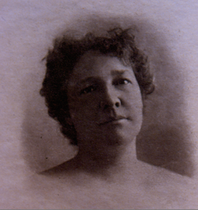
Mildred Aldrich, an elderly American expatriate in France, arose each morning at dawn during the summer of 1914, wrapped herself in a cloak, and went to her lawn to gaze over the French countryside. Each morning the sun illuminated the same lovely valley: “miles and miles of laughing country, little white towns just smiling in the early light, a thin strip of river here and there, dimpling and dancing, stretches of fields of all colors.” She had retired to the French countryside to live the last years of her life in rural peace. But instead she was soon watching World War I unfold from her own front yard....
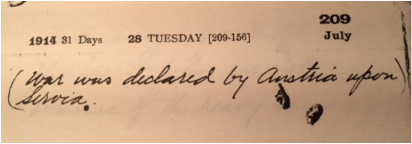
One hundred years ago today on July 28, 2014 Austria-Hungary invaded Serbia, beginning World War I. My father was about four years old in July of 1914. He was living in India, near Bilaspur, where his father was a missionary and director of a leper asylum. Grandfather Herman Suckau wrote twenty volumes of diaries between 1910 and 1930, his years in India. How quickly would the news of major events in Europe reach his remote corner of India, and to what extent would they capture the attention of a young missionary deeply engaged in his profession as preacher and doctor?
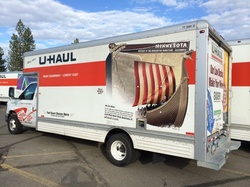
Roughly 2000 U-Haul trucks like the one in this picture tell the story of the Kensington Runestone accompanied with the image of a Viking ship. The stone which was "discovered" in a farmer's field in 1892 purports to have been written by Norse explorers in 1362. While paying tribute to U-Haul for presenting "the most numerous rolling history lessons in the United States," this post notes that the authenticity of the famous stone is questionable. It continues with the story of "real-life" Vikings in Greenland and on the coast of North America.
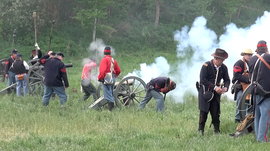
On Memorial Day Weekend, 2014, about 500 Civil War reenactors and their families -- all in period costume -- converged on Deep Creek, Washington, to relive the camp life and battle field encounters of 1864. They came from Washington, Oregon, Idaho, and Montana to travel across time by 150 years. I found the doings at Deep Creek, Washington, last weekend so engaging that I went twice. I was drawn in equally by the quiet domestic scenes and the loud battle reenactment.....
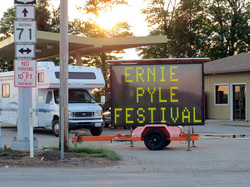
The memory of this "encounter" is fresh and nurturing now, eighteen months later. I was traveling through Indiana in my RV, hauling a motor cycle. I had just spent a week at a campground near Bloomington, where I had grown up more than half a century before. As I was driving along I was thinking of my father and especially of a man named Ernie Pyle whom he introduced to me and my brother. Pyle was an Indiana University graduate and the greatest journalist of the Second World War. He had died in the war before we learned about him, but in my father's memory his reports from the front still lived.
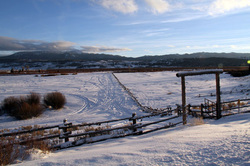
"Don't Fence Me In" -- these words went through my mind a couple days during an evening walk beside Buffalo Creek and along Route 287 toward Moran, Wyoming, and the Grand Tetons. Few songs evoke the spirit of the Old West as effectively as "Don't Fence Me In," and yet here I was in a quintessential western setting that was intersected by one fence after another, all blending in nicely with the scenery.
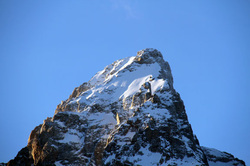
I took a walk yesterday with friends in Grand Teton National Park. Along the way I composed a blog post with some historical notes about this, one of the grandest mountain-scapes in the entire world. Then I began editing my photos for this post, and I find myself speechless. And so I will let these images speak for themselves, allowing myself only this short phrase from Henry David Thoreau: "In wildness is the preservation of the world."
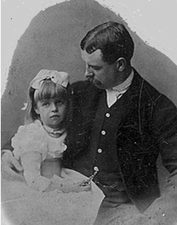
That wonderful childhood Christmas remained with Eleanor throughout her life as a powerful talisman. Christmas was an important part of Eleanor Roosevelt's adult life. She even kept a "Christmas closet" in which she stored presents throughout each year, carefully selecting each gift for each member of her family and friends. Many years later, when she was on the path to being America's foremost First Lady and a key person in drafting the Universal Declaration of Human Rights, she remembered all of these details of that long-ago Christmas....
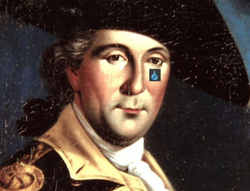
1776, the "Year of Independence," was already a time of disasters for George Washington; then came the fall of Fort Washington. The leader of the newly-minted Continental Army he had failed to protect New York City from British occupation. He had been chased from Brooklyn to White Plains then across the Hudson to New Jersey, losing battle after battle. Accepting ill-advised advice from his subordinate Nathanial Green, he had left behind almost three thousand Continentals to hold Fort Washington, the last American outpost in Manhattan.... Now comes an interesting and important question. Did George Washington actually weep when he learned of the surrender of his namesake fort? The jury is out on this, with two Pulitzer-Prize historians on opposite sides of the question.
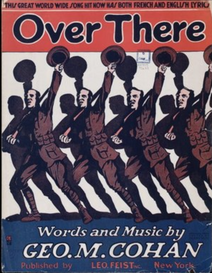
One of my favorite research projects by a history student at Eastern Washington University was an interview Ted Kisebach did in 1985 with Weldon and Walter Armfield, Spokane brothers who fought together in World War I. In an article based on his research, Kisebach wrote:
"Locating a surviving veteran of World War I is an increasingly difficult task today, nearly seven decades after the "doughboys" first set foot in France. A veteran of the American Expeditionary Force, in good health and sound memory, is a valuable historical asset. So it was exciting to find 93 year-old Weldon 'AImy' Armfield living at the V. A. Hospital in Spokane, Washington. When complimented on his remarkable recollection of the past, Weldon replied that his brother, also a veteran living in Spokane, had an even better memory. He added that Walter, 95, was his older brother!"
In this post you can learn more about the Armfields, find a link to Kisebach's article, and hear three of the World War I songs the brothers sang almost 70 years after the Armistace.
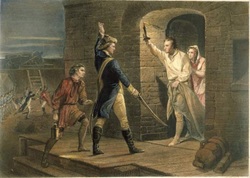
How Ethan Allen "Justified" the American Capture of Ticonderoga During the American Revolution,,,,
I've always loved this scene: there is British Lieutenant Jocelyn Feltham, caught with his pants down -- literally, breaches in hand looking out at a crowd of American soldiers already inside his fort. An authoritarian British soldier, Feltham demanded better credentials than mere force. And the interesting thing is that Allen respected his demand. He could easily have said, "by the authority of cold steel and hot lead!" But like his British adversary, he embraced in a certain orderliness in politics. What to do? Read on!
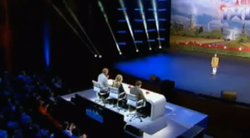
A few weeks ago I posted a blog on "Oh, the Joy!" or "sublime moments" in American history, in which I offered up the arrival of Lewis and Clark at the Pacific Ocean as an example of such events, and wrestled with the wider meaning of sublime moments. This evening a nine-year-old girl on a talent show in Holland led me deeper into this subject. And yes, Holland today, is a long way from my central topic in my blog, American history. But sometimes we learn about past feelings and events through contemporary examples. So, bear with, watch the video, and then please do return to this post....
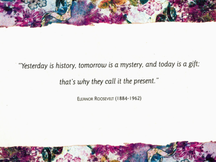
I received a card recently with a purported Eleanor Roosevelt quotation on one side and an advertisement for pre-paid cremations on the other. Good grief, I thought, how tacky! But thinking further I recalled that ER herself was accused of tacky behavior during her life time when she went on radio and television to advertise Simmon's mattresses and Good Luck margarin.
Hummmmm.....
Hummmmm.....
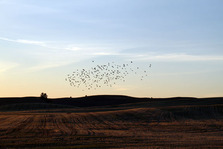
...in the Cheney Palouse.During 15,000 miles of recent travel by RV and motorcycle, criss-crossing the United States, I have been impressed again and again with the beauty of the country -- to the point sometimes of a lump in the throat. My reaction is emotional as well as cerebral, a powerful sense of beauty as a spiritual force. "America" captures that spirit. How wonderfully the song shifts in those final lines to the kinship of the people of the land: "Crown thy good with brotherhood, from sea to shining sea." Herewith a little essay on the song and its resonance with my neighborhood in Eastern Washington -- complete with text and slide show!
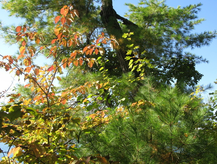
The love of the natural landscape was not always present in American history. The first pioneers viewed forests in terms of board feet of lumber, wolves and bears as pests, and the Grand Canyon as an unfortunate obstacle to travel through the Southwest. Before a movement for wilderness preservation could grow, some Americans needed to celebrate forests, wildlife, and geological features for their own sake -- and needed to realize that "progress" threatened these natural wonders. Some of the forerunners of the explicit wilderness preservation movement of the late nineteenth century, began with subdued language, with laments that were all the more powerful for their expressions of personal sorrow at assaults on the natural world. In this post we explore one such lament, written by Henry David Thoreau, through an image, text, spoken word, and a Quizlet.
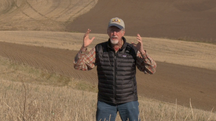
I like to learn speeches, documents, and poems by heart to "pull out of my hat" while teaching American history. A couple of days ago I talked about and "channeled for" Patrick Henry and his "Liberty or Death" speech, delivered on the eve of the American Revolution....Yesterday, I ventured out onto a wheat field road with two students, Cory Carpenter and Jake Shelley, to make this little film about the trials and triumphs of putting the memory to work on a famous speech.
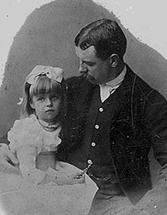
This post evokes the time and place in which Eleanor Roosevelt was born, New York, 1884, and visits her fourth birthday. It includes passages from my book on Eleanor Roosevelt and a reading of those passages by Donata Peters:
"Eleanor was confident of her parents' love. In the mornings she came to her father's dressing room and chattered to him and danced in circles. Then he complained that she made him dizzy and tossed her high in the air. She called herself "father's little golden hair." As Elliott tucked her into bed on the night of her fourth birthday, she told him, "I love everybody, and everybody loves me." Such a cunning, funny little tot, Elliott thought."
The sub-heading for this post is "Eleanor Roosevelt from Conception to Early Childhood."
"Eleanor was confident of her parents' love. In the mornings she came to her father's dressing room and chattered to him and danced in circles. Then he complained that she made him dizzy and tossed her high in the air. She called herself "father's little golden hair." As Elliott tucked her into bed on the night of her fourth birthday, she told him, "I love everybody, and everybody loves me." Such a cunning, funny little tot, Elliott thought."
The sub-heading for this post is "Eleanor Roosevelt from Conception to Early Childhood."
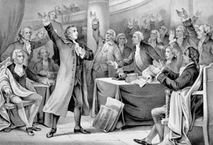
One of my favorite ways of teaching history is to role play historical characters . At various times I have been "Rev. Youngs" preaching a Puritan sermon to my students, Andrew Carnegie describing the steel magnate's fabulous career, and "Uncle Bill" debating the merits of Woman Suffrage with his anti-suffragist niece "Nancy" -- played by a teaching assistant. Today I did my best to channel for Patrick Henry so that I could enable my students to hear him deliver his powerful "Give Me Liberty or Give Me Death" speech, which he delivered in Virginia on the eve of the American Revolution. This post includes the video of my effort to "be" Patrick Henry for a few minutes.
Captured by Indians: Mary Rowlandson and the Problem of Memory
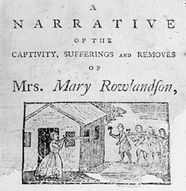
We look at a classic American captivity narrative in the light of two TED talks on the ways our memories can mislead us. Remembering the 1675 attack on her house in Lancaster, Massachusetts, Mary Rowlandson wrote:
-- Then I took my children (and one of my sisters' to go forth and leave the house: but as soon as we came to the door and appeared, the Indians shot so thick that the bullets rattled against the house, as if one had taken an handful of stones and threw them, so that we were fain to give back.... But out we must go, the fire increasing, and coming along behind us, roaring, and the Indians gaping before us with their guns, spears, and hatchets to devour us.
-- The details are brilliant, but did Mary Rowlandson get all of the details right? Scott Fraser and Elizabeth Loftus warn us that memories can be fickle and vulnerable to manipulation.
-- Then I took my children (and one of my sisters' to go forth and leave the house: but as soon as we came to the door and appeared, the Indians shot so thick that the bullets rattled against the house, as if one had taken an handful of stones and threw them, so that we were fain to give back.... But out we must go, the fire increasing, and coming along behind us, roaring, and the Indians gaping before us with their guns, spears, and hatchets to devour us.
-- The details are brilliant, but did Mary Rowlandson get all of the details right? Scott Fraser and Elizabeth Loftus warn us that memories can be fickle and vulnerable to manipulation.
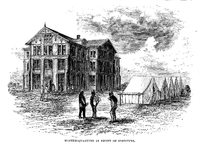
If I could travel in time one of the historical moments I would most like to visit is graduation day, June 10, 1875, at Hampton Institute. The college had been founded a few years before under the leadership of Gen. Samuel Chapman Armstrong, and it was about to graduate its most famous pupil, Booker T. Washington. Newspaper reporters flocked to the ceremonies and wrote rave reviews comparing events favorably with graduations at Yale, Harvard, and other notable universities. The center piece of the event, and the quality that draws me most to that day, was the remarkable music sung by the students, most of whom could remember the music of only a few years before when they had been slaves. This post includes words, images, and music.
Would Henry David Thoreau have "Scored" an iPhone 5s?
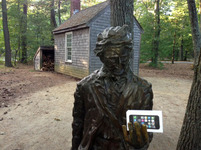
Is technology the friend or the enemy of the humanities? Of course, there are all sorts of "it depends" for this question. Which technologies? Which humanities? Which goals? But for this post, I'll keep it simple.... This was the morning that the latest and greatest iPhone was about to go on sale and I was determined to have one. I was staying near Walden Pond and so Henry David Thoreau was very much on my mind as I waited... and waited and waited in line for an iPhone 5s, complete with, gulp, fingerprint reading capabilities. But was I forgetting Thoreau's great pronouncement on living well, "Simplify, Simplify"?
Swimmers at Walden Pond: Henry David Thoreau and his Successors
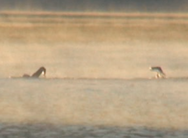
Walden Pond is the most famous pond in the world, and rightly so. Thoreau's two-year stay here in 1845-1847 led him to write Walden; or Life in the Woods, one of the classics of American literature.... Few places in America can rival Walden Pond for stimulation from a natural setting and the words associated with that setting. John Muir's Yosemite comes to mind as another such locale. But they are rare and special.... At the pond's edge I saw a half dozen men and women preparing to swim or already in the water. In a moment we'll look at the patterns they made across the pond, but first let's explore what Thoreau himself said about swimming in Walden....
On the Road with History 498: "The History of the American National Parks"

One of the courses I teach at Eastern Washington University is a history of the American National Parks. I also teach a course called "The History of the American Wilderness." I expect to work up material from both of those courses for my American Realities blog -- as well as developing entirely new wilderness-related subjects. While working on, I have travelled by RV and motorcycle about 15,000 miles during the past two years.
Attacks on the United States: Remembering Osama bin Laden and Pancho Villa
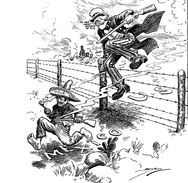
During the past 198 years since the Battle of New Orleans, the continental United States has suffered foreign invasions only twice. Most recently, of course, the nation endured attacks on New York City and Washington D.C., on September 11, 2001, in a terrorist attack master-minded by Osama bin Ladin. The previous attack on the United States was planned and executed in person by Pancho Villa, the Mexican revolutionary, who crossed the border and laid waste to Columbus, New Mexico, on June 9, 1916.
“Oh! The Joy!” -- Sublime Moments in American History
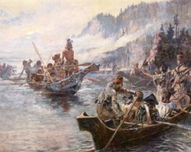
One of my favorite moments in American history is embodied in a simple phrase recorded by William Clark in 1805 shortly after he and the Corps of Discovery reached the Pacific: “Ocean in view! Oh! The joy!”.... Reflecting on William Clark’s phrase, I have decided to compile a list of other “Oh! The Joy!” moments in American history, and herewith a preliminary list of qualifications.... To explore this subject further, let’s look at another sublime moment in American history: George Washington’s crossing the Delaware.
Eleanor Roosevelt, Lorena Hickok, a Buick Roadster, and a Trip to Quebec
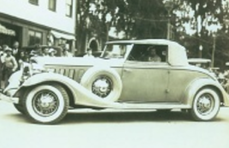
Soon after becoming First Lady Eleanor Roosevelt joined her friend Lorena Hickok on a vacation trip to Quebec in a sporty Buick Roadster. Although she was ultimately one of the most beloved and influential women in American history, Eleanor was a reluctant First Lady.... During the previous decade she had been active in Democratic party politics as well as helping run Todhunter School in New York City. She thrived on an active life, and she feared that her new role would be decorative rather than decisive.... One of her most independent-minded acts during her first few months as First Lady was to take a vacation by automobile with none of the fan fare of her position.
“Ocean Reveries” in Herman Melville’s Manhattan and Today’s Seattle
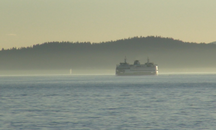
One of my favorite sections of Moby Dick occurs long before Harman Melville introduces us to Queequeg or Capt. Ahab or Moby Dick himself. In fact, the passage occupies the second, third, and fourth paragraphs of the book and introduces us to the real protagonist, the sea itself.... What I saw in Seattle yesterday evening echoed what Melville saw in New York City more than a century-and-a-half ago, to wit....
Indian Pow Wows in Spokane: Past and Present (3) – Indians at Expo ‘74
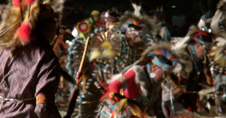
A few days ago Spokane hosted the “Northwest Indian Encampment. Market and Pow Wow." The event was a reminder of other moments in the early history of Spokane.... An episode in my book, The Fair and the Falls on Spokane's Expo '74 resonates with the recent encampment: an interview with Native American dancer, Spokane Indian David Brown Eagle, done for the book about twenty years ago. (Expo ’74, by the way, was the first world’s fair in which Indians were in charge of planning their own fair exhibit.)
Indian Pow Wows in Spokane: Past and Present (2) - The Nez Perce War
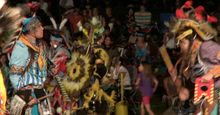
During the past weekend Spokane hosted the "Northwest Indian Encampment. Market and Pow Wow." The event was a reminder of other moments in the early history of Spokane.... The story below describes a moment when relations were more tense in Spokane, during the Nez Perce War of 1877, when the Spokane was only three years old. Then as now, Indians were drumming near Spokane Falls, but were they planning to attack the tiny village? Read on!
Indian Pow Wows in Spokane: Past and Present (1) - Two Cultures, One Dance Floor
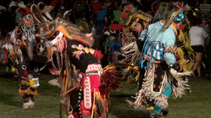
One of the great pleasures of being an historian is to journey into those moments where present and past merge. This evening I was in one of those magical places as I attended the Spokane Falls Northwest Indian Encampment & Pow Wow in Riverfront Park.... This was in modern-day Spokane with its buildings in the background just across the river. But in my mind I travelled back to 1875 and 1876 to other Indian dances that had taken place, just a hundred or so yards away. In this passage I describe the mingling of whites and Indians in early Spokane, and the dance floor they shared during festivals."
“Come on, you sons of bitches, do you want to live forever?!”
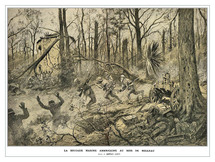
General John J. Pershing, commander of American forces in World War I, called Belleau Woods one of the most important battles American troops ever fought. In the June of 1918 German forces captured Chateau Thiery on the Marne River and were moving westward toward Paris, 60 miles away.. The United States had been in the war for more than a year, but until this time they had been training behind the lines, not in actual combat. In fact, the American had lost fewer than 200 men so far in a war that saw battles with 60,000 casualties in one day....
Memories of the Lafayette Escadrille at the American Cathedral in Paris
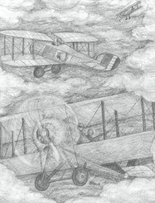
They were fighting as volunteers in a war their own nation had not even entered. They flew aircraft of wood and canvas thousands of feet above the ground. They struggled to avoid machine gun bullets fired at them by other airmen and deadly shells hurled at them by artillery batteries on the ground. If their frail planes were hit, the pilots could not parachute to safety, for bureaucrats – not themselves at risk – had decided that these men needed no parachutes....
Hiroshima, 68 Years Later

Sixty-eight years ago today, the United States had dropped an atomic bomb on Hiroshima (August 6) and was about to drop an atomic bomb on Nagasaki (August 9). Of the roughly forty essays I wrote for various editions of my book, American Realities, this was the most demanding of my imagination. At various points in my research I felt myself to be in the middle of the events I was describing....
Eleanor Roosevelt Tours the South Pacific During World War II
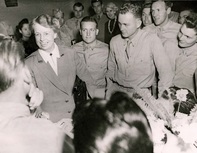
Seventy years ago this August, First Lady Eleanor Roosevelt, made an extraordinary trip to the South Pacific. Here is how I begin describing the trip in the prologue to my book, Eleanor Roosevelt; A Personal and Public Life: "From the window of an Army transport plane Eleanor Roosevelt gazed down at the blue waters of the South Pacific...."
How I helped Gore Verbinski and Jerry Bruckheimer film The Lone Ranger
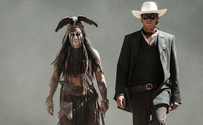
As I was growing up The Lone Ranger was one of the icons of American-Western pop culture. “Hi Ho, Silver,” “Kemo Sabe,” “Who was that masked man?” among others were household phrases across the land.... I saw the film this past weekend and loved it for the way that it plays with American history both in the actuality of the West and in the popular culture of the masked man and his trusty sidekick, Tonto.... OK, so how did I help make all of this happen? By obeying orders and staying in my campground, that’s how.
Uncle William Wheeler at Gettysburg
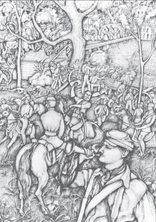
Today is the 150th Anniversary of the decisive day of the greatest battle of the Civil War. The war was, in turn the most deadly conflict in the Western World during the ninety-nine years between the defeat of Napoleon at Waterloo (1815) and the beginning of World War I (1914). I think of the battle, however, on a more personal level through my affinity for my great-great uncle, William Wheeler, captain of the Thirteenth New York Artillery. He died long before I was born, killed outside of Atlanta in 1864. But I feel his presence in my life more than that of any other unmet ancestor....
Duty Free: Running the Gauntlet in Paris and Concord
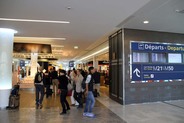
Last week I was travelling from Paris to Seattle. Approaching my gate at Charles de Gaulle airport, I encountered a scene that reminded me of a passage in Walden In Henry David Thoreau’s chapter on the village with its eager merchants lying in wait to captivate passers-by. Before getting to my gate I would need to run a gauntlet between dozens of duty free shops. Here is how Thoreau described the similar ordeal in Concord more than a century and a half ago....
France and the United States: A Tale of Two Tin Cups

I am in France now with my eight-year-old grand-daughter Oona, visiting her Grandmother in the little town of Aoust Sur-Cie. I am staying at an inn in the nearby village of Saillans. This is mountainous country that rises a few miles to the east to the Alps. On the long trip from Seattle to Paris, I read to Oona from Laura Ingalls Wilder’s By the Shores of Silver Lake – a good American tale to carry with us to France....
Turnbull National Wildlife Refuge, Resplendent in Greens and Yellows
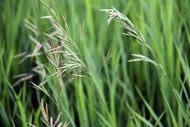
I often think of Great Nature in terms of shapes of things: a towering mountain, a majestic canyon, a roaring ocean. Yesterday walking in nearby Turnbull National Wildlife Refuge I was struck by the colors of things, especially the grasses and flowers. Every blade of grass said, "Look at me. Just look at me. Did you ever see anything so green before."....
New York's Central Park: A Wilderness?
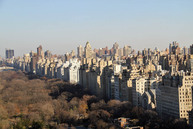
One of the central themes in my course, The History of the American Wilderness, is the question, how do you define wilderness? I took this picture last fall (2012) from a hotel room high high above Central Park. On the right is the city of New York, and on the left is -- the wilderness. Please bear with me as I make my case....
A Disturbing Presence: Earth Movers in our Wheat Fields
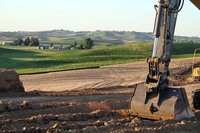
One of the pleasures of life in Cheney, Washington, is taking a walk through the Eastern Washington University campus to a hilltop overlooking the rolling fields of wheat beyond. I have often thought that the university should create a trail through the fields -- what a superb hike that would allow, leading right from campus into the open country beyond. So I was hopeful when I saw some earth moving equipment "staged" above the parking lot on the edge of the fields....

